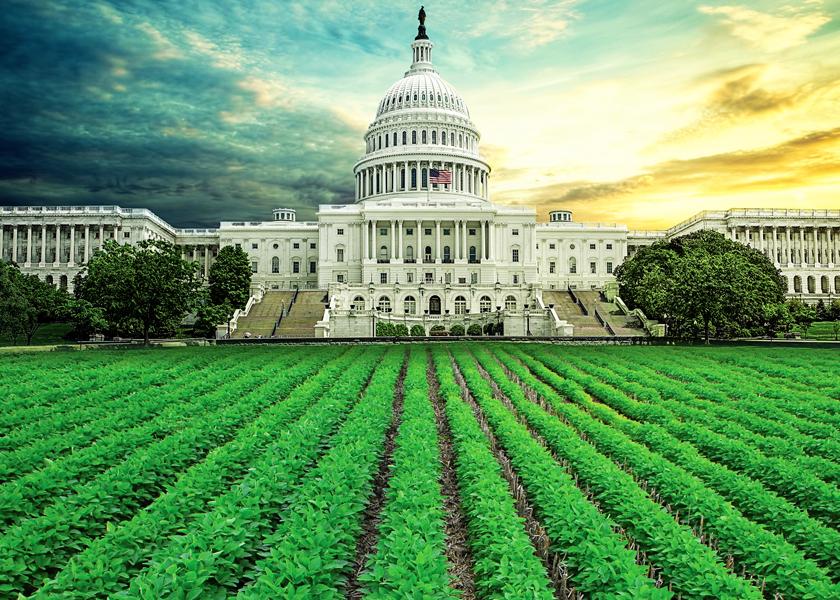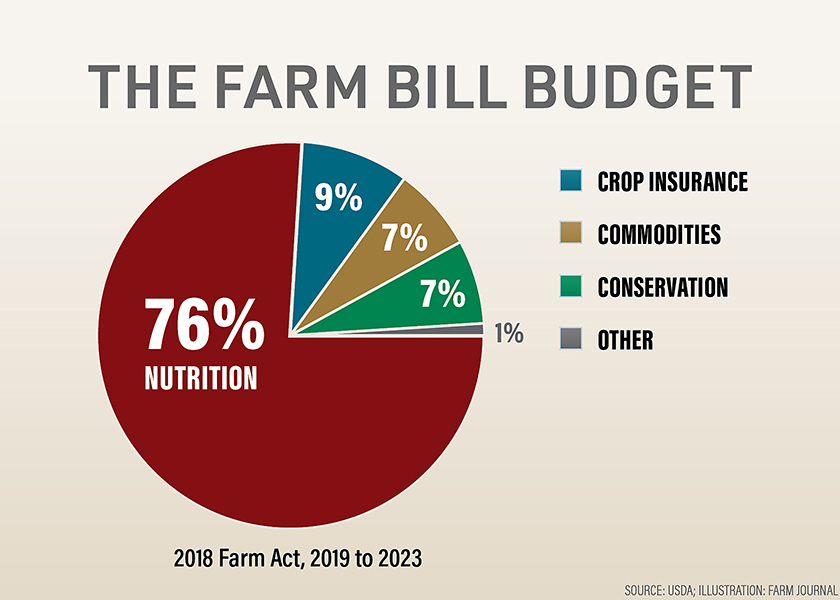What Do Americans Want to See in the 2023 Farm Bill?

American Farm Bureau Federation released a survey on Wednesday, which shows the majority of respondents agree that nutrition and risk management should be top funding priorities in the farm bill.
Historically, the nutrition title, including Supplemental Nutrition Assistance Funding (SNAP), takes the majority of the farm bill cake, as was seen in 2018 when nutrition made up 76% of the budget.

The Congressional Budget Office, in its 10-year Budget and Economic Outlook, raised the cost estimate for SNAP by $93 billion over the next decade. Sen. Joni Ernst (R-IA) says this is where the greatest farm bill debate will take place.
“If you’re an able-bodied, single male with no children, then you should certainly be working and providing for yourself,” Ernst says. “We have to make sure those funds aren’t abused at the expense of the taxpayer while making sure those needy families do get the support they need.”
While nutrition programs have taken focus, inflation is top-of-mind for Americans.
Addressing Inflation
According to survey results, 86% of respondents are concerned about food inflation. And the issue didn’t go unnoticed by Rep. Austin Scott (R-Ga.) in a recent House Ag Committee hearing.
“I think everybody in America that is watching this is smart enough to recognize the volume of food, as we’ve seen with eggs, there are supply-and-demand issues there,” Scott said to Tom Vilsack, USDA secretary. “No matter how much you give somebody in SNAP benefits, the cost of groceries continues to go up…”
Scott attributes the inflation to “bad” policy, which leads to less food availability. He says food security starts in the farm safety net and program titles, not nutrition.
Risk Management
So, where will risk management fall in the farm bill debate if food insecurity is America’s second-largest concern? Sen. Chuck Grassley (R-IA) says he’s made a point to hold space for risk conversations, particularly insurance, in hearings.
“What we need to do is make sure the crop insurance program is kept as the most useful safety net tool for the family farmers—that's 86,000 in Iowa, and over the country as a whole about 2% of our population are involved in ag, producing the food for the other 98%,” Grassley says. “And that 2% needs consideration, considering how important they are to the livelihood of everybody else."
But there is a chance the insurance title could be “reworked” all together, according to Kala Jenkins, Pinion ag consultant.
“I’ve heard chatter about whether we need to change the way some of these programs work today, like whole farm crop insurance programs versus the noninsured crop disaster assistance program.” she says. “Then there are also some stakeholders questioning whether we need to link insurance to conservation, while others don’t want it to be the main focus. The needle is all over the board.”
What’s at Stake
With so much uncertainty in the farm bill arena, it begs the question of whether a farm bill will be passed in 2023. And most American’s understand what those repercussions would look like, even if they aren’t involved in ag.
When questioned about whether they think a farm bill passage or delay would impact the country, their state, community family and themselves, respondents forecast the biggest impact would be on the country and the smallest impact landing on themselves.
These results may have something to do with consumer’s trust in producers. According to the survey, 89% of adults trust farmers, which has remained steady since 2019.
“Almost nine in ten adults trust farmers, which will be important as we work to inform the 260 lawmakers who weren’t in Congress when the last farm bill was written,” says Zippy Duvall, AFBF president.







